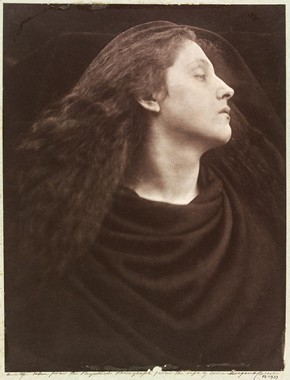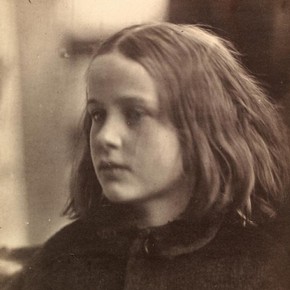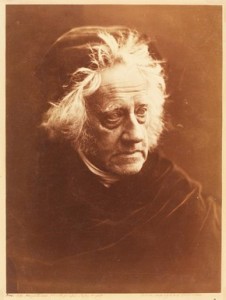By Beth Dunn (Wonders & Marvels Contributor)
I longed to arrest all the beauty that came before me, and at length that longing has been satisfied.”
-Julia Margaret Cameron
Julia Margaret Cameron was widely regarded as the ugly duckling of her family. Born in India into a clan of famously beautiful women, the daughter of a British officer of the East India Company, Julia was always considered plain and uninteresting.
And indeed, for most of her life, she seemed destined to bear this out. She was married early to a man twice her age, and they continued to live quietly in India for the first ten years of their marriage. Then he retired and they returned to England, where they settled into the next chapter of the comfortable, if unspectacular existence that had been charted out for her.
But then, on her 48th birthday, Julia received a camera as a gift from her daughter. And at that, she was off and running.
It wasn’t particularly easy to be an amateur photographer at the time. Materials were costly, models were hard to come by, and the laborious process of developing and printing the work involved long hours and at least a passing fondness for chemistry.
But Julia was fortunate in these things — she had money, she had time, and she access to models by way of her own children and servants, and even to celebrities by way of her sister, who hosted a regular salon in Kensington that brought the cream of the literary and artistic world together on a regular basis.
Her portraits were ethereal, soft-focus, and sensual. She produced close-cropped portraits of children and young women, as well as dreamy allegorical and historical tableaux, all in the pursuit of “arresting beauty,” as she would write later, as if she wanted only to preserve her subjects in amber for all time.
And of course that’s why I love 19th century portrait photography — because it does preserve the faces of the past with an immediacy and an intimacy that even the best oil or pastel can’t give you. Most portraits from this era, in fact, can give you that startling jolt of recognition, of seeing human eyes peering back out at you from the past, which makes old photography so compelling.
But Julia Cameron’s photography takes it a step further, because her work allows you to see into the mind of the person standing behind the camera.
You have an absolute sense that here is somebody who knows what she is trying to capture, and she’s willing to go to any lengths necessary to get it down, to lock it in time, and save it for future eyes to see, to marvel at, to comprehend.
While much of Julia’s work survives today because she was meticulous about registering and copyrighting all of her work, much of it has also been preserved because of its subject matter.
In many cases, her portraits of the great figures of the day are the only — or in some cases, the best — that survive. Ellen Terry, Charles Darwin, Lord Tennyson, Robert Browning, William Rossetti — her lens opened and closed on a brief moment of time in each of their fascinating, turbulent lives.
She found a friend and mentor in Sir John Herschel, son of the famous astronomer of an earlier generation, who introduced her to the intricacies of photography and who shared with her the very latest scientific advances in the new medium. She took his portrait, too.
It took almost one hundred years for Julia’s work to begin to receive the recognition it deserved, when a 1948 book celebrated her early contributions to the field.
Prior to this mention, she had been included in the 1886 Dictionary of National Biography, in a brief sketch of her life that was written by her niece and frequent model, Julia Prinsep Stephen, who would later become somewhat better known as the mother of Virginia Woolf.
The Victoria and Albert Museum in London has an extensive collection of Julia Margaret Cameron’s work, most of which you can access and browse online. The V&A will also feature works by Julia Margaret Cameron in an exhibit to celebrate the new Photographs gallery, opening on October 24, 2011.
(Hat tip to Essie Fox, The Virtual Victorian, for reminding me of Julia Margaret Cameron’s work, and for the news about the upcoming exhibit.)
Beth Dunn is a writer and novelist with a fierce attachment to 19th century history, literature, and decorative arts that is rapidly approaching the obsessive. She blogs at An Accomplished Young Lady, where she generally lets it all hang out. I mean. In a totally appropriate, 19th-century kind of way.



